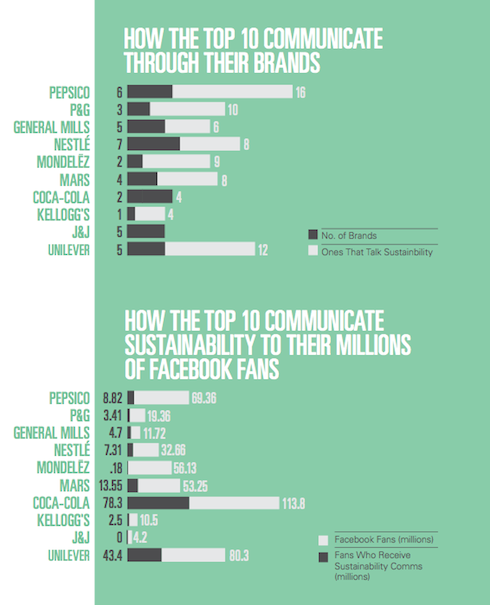By adaptive - February 19th, 2014
Which of the leading brands effectively used social media to communicate their sustainability achievements?
For corporations, CSR has become a critical component of their brand image, and today is used increasingly by consumers as a differentiator when choosing a brand to do business with. The environment and the practical steps that brands are taking need to be communicated to fully engage with a customer base, and build long and profitable relationships.
In their current study that considers sustainability from a corporate perspective, and how these values are communicated across social media networks, Sustainly concluded:
“Nearly half of the 475 companies we studied (233) have social media channels or campaigns dedicated to discussing their sustainability or corporate social responsibility efforts. That’s an impressive number, especially when you consider that just four years ago only 60 major companies were using social media for sustainability. Part of the reason for this increase can be explained by the explosion of corporate social media noise in general. But it also seems clear that, as the environmental and societal issues that frame sustainability begin to grow in importance within society and at board level, so companies are increasingly keen to tell the world about just how sustainable they are trying to be.
“Social media provides the perfect platform for companies to communicate sustainability because it is driven by the philosophy of being transparent when communicating and authentic in what you have to say. Time and time again over the last decade, companies have found—to their cost—just what happens when they try and fool social media communities or fail to respond promptly and transparently to questions consumers ask of them. As more and more companies seek to show just how responsible they can be (and explore how they can make sustainability a valuable business offering) so they will increase their use of social media to build community and promote their sustainability “stories”.”
One of the main issues to come out of this research is that there is little in the way of standardised descriptions of what is meant by sustainability. Brands use a plethora of language to describe this component of their businesses across all the leading social media networks. This has lead to a level of confusion that is damaging the abilities of brands to effectively communicate CSR messages to consumers.
In a bid to clearly explain their CSR, Unilever for instance developed its Project Sunshine initiative to raise consumer awareness of the sustainable components of its FMCG activities.
Focusing on the FMCG sectors allows a like for live comparison to be made across brand engagement. The Sustainly report warns:
“The missed possibility to influence sustainable living becomes even greater when you consider the potential community reach of these brands. Consider their presence on Facebook as one example. Together the 113 brands covered command a Facebook audience of 451 million “likes/fans”. Even when you take into account the low level of engagement that brands command on Facebook, those 113 brands still have massive potential social media clout. But, at present, the 35 brands that do mention sustainability or CSR causes reach only 162 million Facebook “fans” and 78 million of those are “fans” of one brand, Coca-Cola.”
There are of course exceptions where brands have used their creativity to communicate their sustainability credentials. Through last year, Ford’s One Tank Adventure, Siemens continued its Answers initiative with AT&T stole the limelight with its Werner Herzog directed 30-minute documentary.
For brands social media has opened a gateway to unprecedented levels of engagement with their customers. The purchase cycle – or more importantly – what now influences purchasing decision is manifold. Brands – with a few notable exceptions – been lax when it comes to communicating their activities and achievements within the sustainability components of their enterprises. This is surprising, as the environment has been gaining in importance when brand sentiment and advocacy is considered. More clearly needs to be done in order for CSR to take its place within a brand’s metrics and deliver to consumers the information they need to make informed purchasing decisions.
Next Reads
June 2014, New York
Become a social business: For superior marketing response, sharper corporate decision-making, enhanced innovation and a happier, more loyal customer
Brochure Programme
